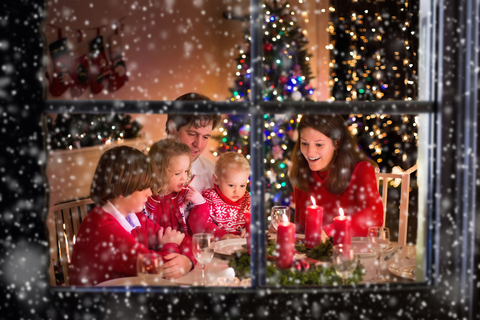

The traditional celebration of Christmas in the United States has great significance. According to a 2013 Pew Research Center survey, 9 in 10 Americans (92%) and nearly all Christians (96%) say they celebrate Christmas. In the U.S., Christmas is not only celebrated on December 25. It's a whole season! Christmas was declared a federal holiday in the United States in 1870 in a law signed by President Ulysses S. Grant.
The historian Miguel Perez, a professor at Lehman College in New York, affirms that in 1539 the celebration of the first Christmas in America took place. This happened in Anhaica, a native town known today as Tallahassee, the capital of the state of Florida. It is believed that the military and expeditionary Hernando de Soto, a dozen Catholic priests, and 600 Spanish explorers celebrated the first American Christmas.
In the years following the Protestant Reformation in England in the 16th century, Christmas festivities were frowned upon or suppressed. Therefore, in the colonial days of the United States, the Puritans of New England rejected Christmas. In fact, their celebration was outlawed in Boston from 1659 to 1681. At the same time, Christian residents of Virginia and New York followed the celebrations.
After the Civil War, the Puritan government ended Christmas without celebration, and in 1647 Oliver Cromwell banned all celebration of Christmas by an Act of Parliament. After independence, the custom of celebrating Christmas was lost in America, as it was believed to be an English custom.
Towards the 1820s, in a calmer and more secular environment, Christmas began to take shape from the emergence of new customs and the adaptation of others.
Illustrations of the tree and the British royal family were adapted to America. For these, the queen's crown and Prince Albert's mustache were removed, so the scene looked like an American family gathered around the Christmas tree. That illustration is considered the first influential image of a Christmas tree in America.
On the other hand, Santa Claus was mentioned in literature in 1821. The book "Old Santeclaus with Much Delight" described him as a character who flew in his magic sleigh pulled by reindeer and arrived on December 24. In 1931, Coca-Cola incorporated the image of Santa Claus in its advertisements. This brought fame to Santa Claus and established him as a commercial icon.

The stocking tradition came after Santa Claus. It is born from the story of a father of the nobility who, after the death of his wife, lost all his wealth and had nothing to pay for his daughters’ wedding. Santa Claus felt sorry for this family situation. One night he went down the chimney and left a gold ingot in the daughters' stockings that were drying in the fireplace heat.
In the 1980s, one of the most current traditions began, "Ugly Sweater Day.” It had its greatest boom in 2003 at one of the first parties held in Canada to raise funds for cancer. In a couple of years, this festival has spread worldwide and is now celebrated on the third Friday of every December. America has also adopted this tradition, which is celebrated in many states.
As a rule, the outfit to attend family gatherings, meet with friends, or even go to work is a Christmas sweater. It is the ideal time to release that handmade knit sweater everyone has in their closet.
As we have seen, through history, customs and traditions have been added that make up the cultural history of America. At present, the celebration of Christmas is as follows:
It's important to note that, due to the cultural and religious diversity of the inhabitants of America, these dates are celebrated in different ways by regions and even by families. The enormous range of Christmas traditions in the territory is attributed to America's multicultural nature, making many customs similar to Christmas traditions in Great Britain, Germany, France, Italy, Poland, Mexico, the Netherlands, and more. Americans mix religious customs with their own family traditions when they celebrate Christmas.
Also, this season has a lot of cultural significance for many people in America because many non-Christian holidays are also celebrated during the same time as Christmas. These are holidays like Kwanzaa for African-Americans and Hanukkah for Jews, which, combined with Christmas, create a huge season of celebration.
Date: October 12th, 2022
 Rob
Rob